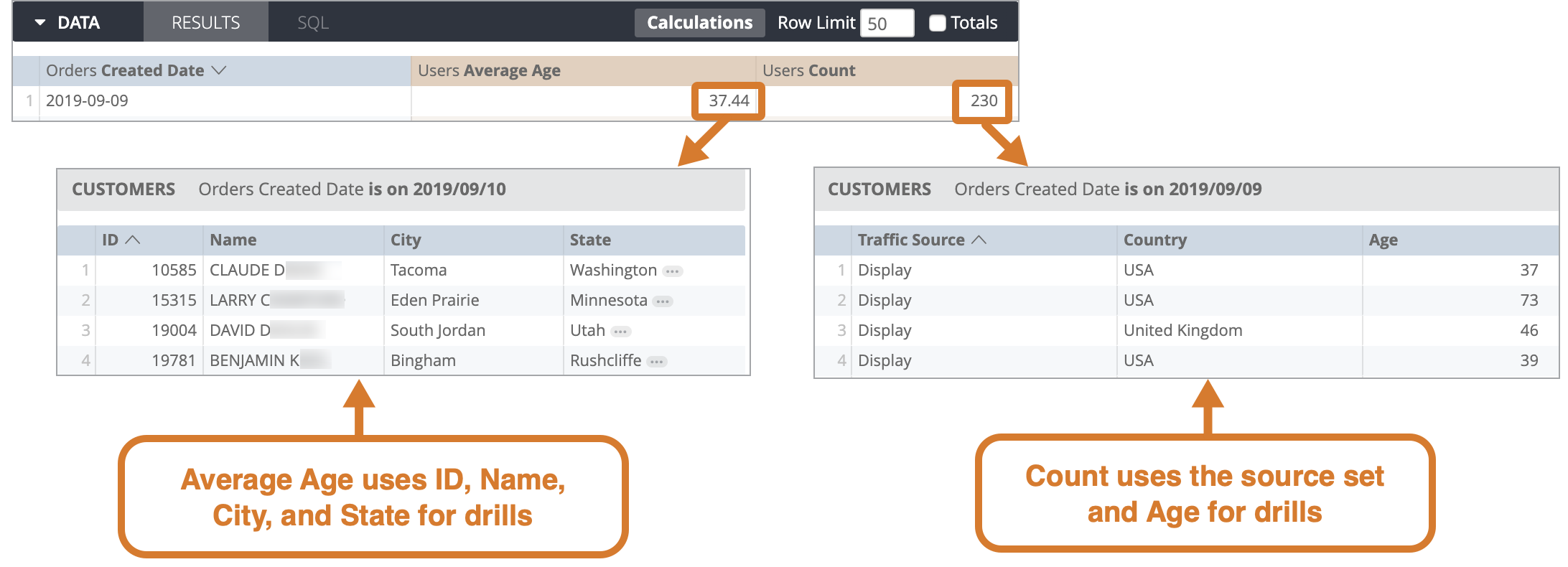This page refers to the
drill_fieldsparameter that is part of a view.
drill_fieldscan also be used as part of a dimension or measure, described on thedrill_fields(for fields) parameter documentation page.
Usage
view: view_name {
drill_fields: [field_or_set, field_or_set, …]
}
|
Hierarchy
drill_fields |
Possible Field Types
Dimension, Dimension within a Dimension Group, Measure
Accepts
A square-bracketed list of field names or set names
|
Definition
The drill_fields parameter controls what happens when a user clicks on the value of a table cell while exploring data. When a user does this, they "drill" into the data, allowing them to see the individual records that make up that cell, limit their query to the cell's value, or slice the data in a related way.
The drill_fields parameter accepts a list of fields, sets, or a combination of both fields and sets.
At the view level, drill_fields applies the declared drill fields to all measures in the view that do not have drill_fields defined at the measure level.
Drilling can be disabled by including in the query a dimension with the can_filter parameter set to no.
Example
Suppose you have the following LookML:
view: orders {
drill_fields: [source*, age]
measure: count {
type: count
}
measure: average_age {
type: average
sql: ${age} ;;
drill_fields: [id, name, city, state]
}
set: source {
fields: [traffic_source, country]
}
}
Drilling into the Average Age field displays the ID, Name, City, and State fields. Drilling into the Count field displays the default Traffic Source, Country, and Age fields.

